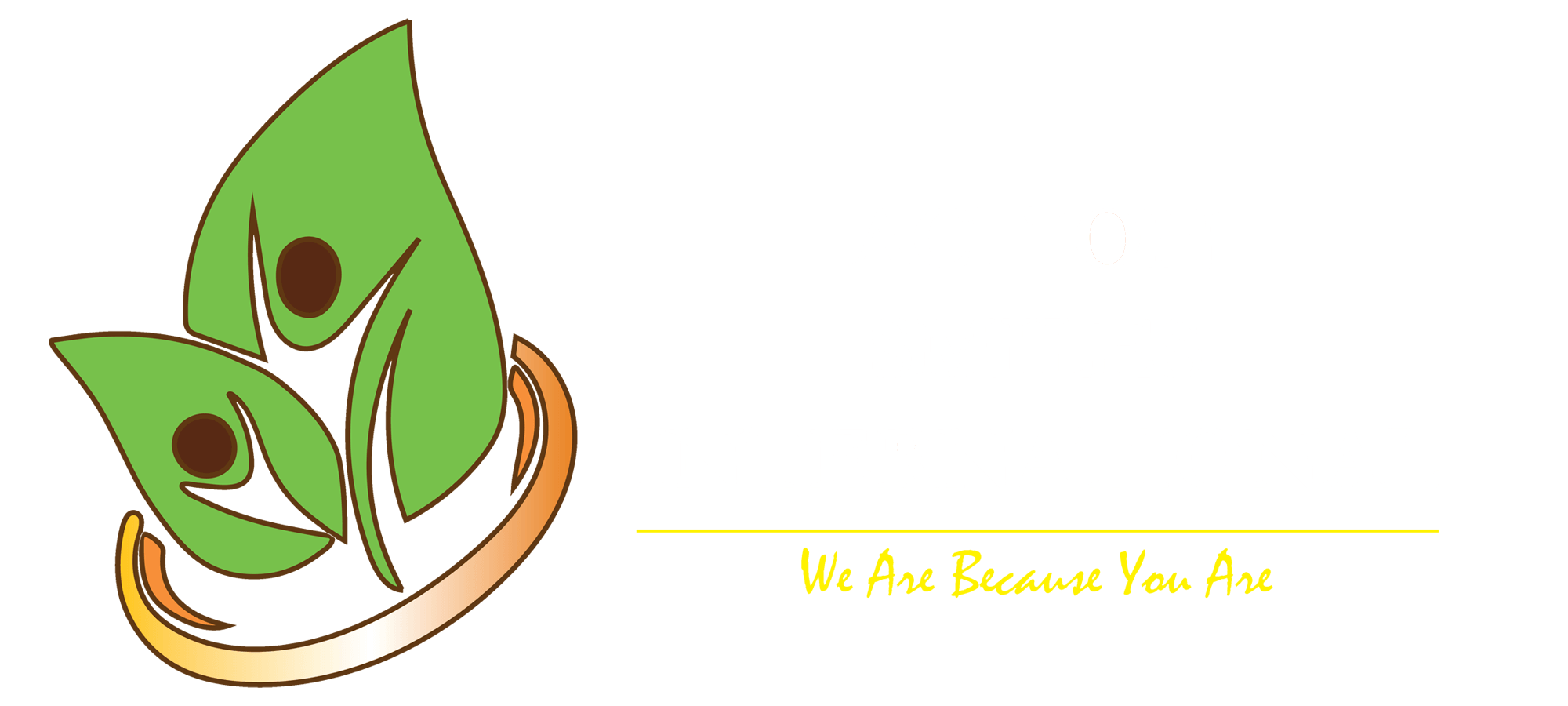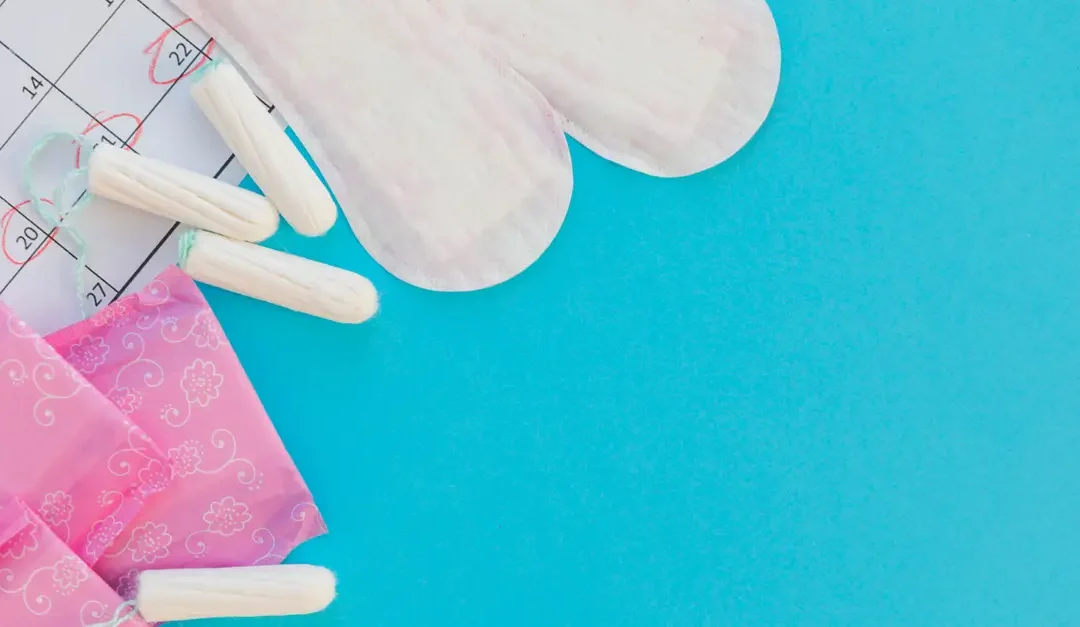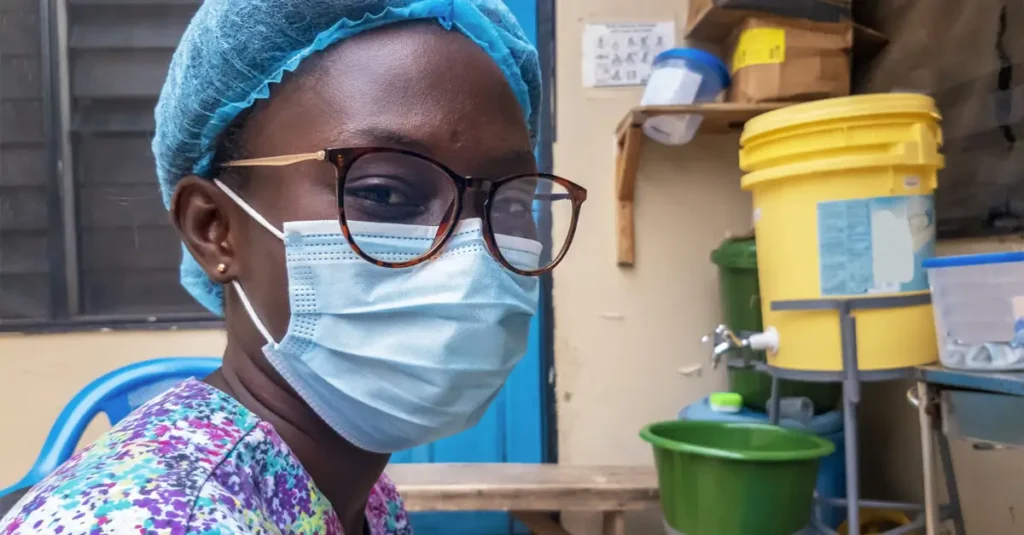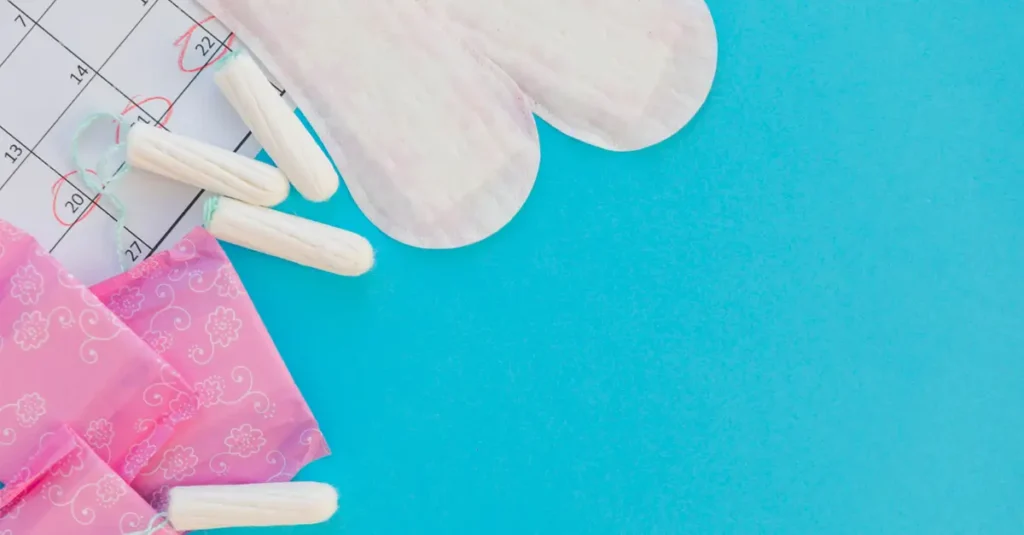On a typical Sunday afternoon in Nyakoe, a village nestled within the rolling green hills of Kisii County, Kenya, the air is usually filled with the vibrant sounds of life. Children’s laughter echoes across the fields as they chase a well-worn football, their energy a stark contrast to the tranquil pace of their elders. The sun casts long shadows from the eucalyptus trees, and the scent of damp earth and distant woodsmoke hangs in the air. Yet, on this particular Sunday, a quiet figure sits apart from the joyful commotion. A teenage girl, isolated not by choice but by a silent, cyclical burden that millions of others like her face every month.
From a distance, her stress is palpable. Her gaze is fixed on her peers, a mixture of longing and anxiety clouding her features. She is a portrait of exclusion, a living embodiment of an invisible barrier that prevents countless girls from fully participating in their own childhoods. This scene, though specific to Nyakoe, is a microcosm of a widespread crisis unfolding in rural communities across Kenya and the globe: period poverty.
When approached with care and concern, the wall of fear and apprehension begins to crumble, replaced by a flood of quiet desperation. The reason for her isolation is simple yet profound: she is on her period and has run out of sanitary pads. With only a single pad left and no more at home, anxiety has become her unwelcome companion.
This is not a story of a singular, unfortunate event. It is the story of a recurring monthly reality. It is the story of parents who work tirelessly in the nearby tea estates, their daily wages barely enough to put food on the table, let alone afford what many consider a basic necessity. For this girl, and for so many others, menstrual hygiene products are a luxury. Her isolation is a coping mechanism, a way to manage the stress and the very real fear of leaks and public shame. Being home alone offers no solace; it only amplifies the loneliness. Coming to the edge of the playing field is a small act of defiance against her circumstances—a way to feel connected to her community, even if only as a spectator.
This is the harsh reality of period poverty, where a natural biological process becomes a source of profound stress, shame, and exclusion.
The Invisible Barrier: Defining Period Poverty
Period poverty is a multifaceted issue that extends far beyond the inability to afford sanitary products. It is a complex web of financial, social, and educational challenges. The World Bank defines it as the struggle many low-income women and girls face while trying to afford menstrual products. This also includes the increased vulnerability to infection due to the use of unhygienic alternatives, as well as the social stigma and lack of education that surround menstruation.
In Kenya, where a significant portion of the population lives in poverty, the struggle is particularly acute. According to the most recent comprehensive poverty report by the Kenya National Bureau of Statistics (KNBS), the overall poverty headcount rate in Kenya was 38.6 percent, meaning nearly two out of every five Kenyans live below the poverty line. For those living in rural areas, this figure rises to 45.1 percent. This economic reality means that when a family has to choose between buying a packet of maize flour or a packet of sanitary pads, food will almost always take precedence.
The consequence is that girls are often forced to resort to desperate and unsafe measures. They may use old rags, mattress stuffing, leaves, newspapers, or even soil to manage their menstrual flow. These alternatives are not only ineffective and uncomfortable but also pose significant health risks, leading to urinary tract infections (UTIs) and other reproductive health complications. Poor menstrual hygiene management is associated with a higher prevalence of reproductive tract infections among adolescent girls in developing countries.
The Domino Effect: How Period Poverty Derails a Girl’s Future
The lack of a simple, affordable pad sets off a devastating chain reaction that can alter the entire trajectory of a girl’s life. The consequences ripple outwards, impacting her education, health, economic future, and psychological well-being.
1. Educational Disruption: Perhaps the most immediate and damaging impact is on a girl’s education. The fear of staining her uniform, coupled with menstrual pain and the lack of proper sanitation facilities at school, forces many girls to stay home. It is estimated that one in ten girls in Sub-Saharan Africa misses school during their menstrual cycle. Over a year, this can amount to missing up to 20% of the school year.
This absenteeism causes them to fall behind academically, making it difficult to catch up with their male peers. The cumulative effect is a decline in performance, a loss of confidence, and, all too often, the decision to drop out of school entirely. When a girl drops out of school, her chances of breaking the cycle of poverty shrink dramatically, perpetuating intergenerational poverty.
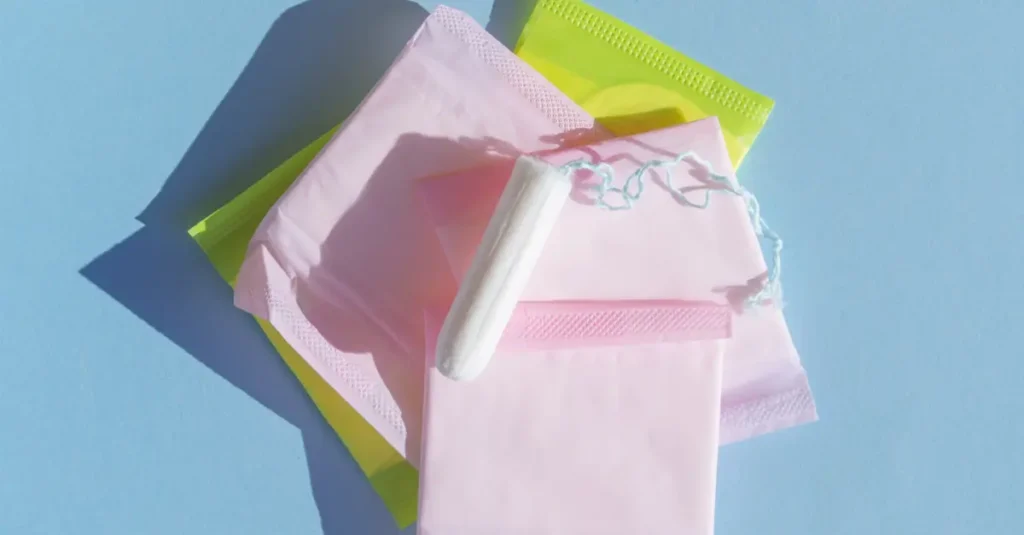
2. Health and Safety Risks: As mentioned, the health risks of using unhygienic materials are severe. Beyond infections, the lack of access to products can lead to more insidious dangers. In their desperation, some girls and young women are forced into transactional sex with older men to get money for pads. This “sex for pads” phenomenon exposes them to a host of dangers, including sexually transmitted infections (STIs) like HIV/AIDS, early and unwanted pregnancies, and sexual abuse. A problem that begins with a natural bodily function tragically ends in a cycle of exploitation and vulnerability.
3. Psychological Toll and Social Stigma: In many Kenyan communities, menstruation remains a taboo topic, shrouded in myths and secrecy. It is often seen as something dirty or shameful. This cultural stigma leads to feelings of intense embarrassment and low self-esteem among girls. They live in constant fear of being “found out.” This psychological burden is immense, leading to social withdrawal, anxiety, and depression. The inability to participate in normal activities—playing with friends, attending community events, or even just sitting comfortably in a classroom—erodes their sense of self-worth and belonging.
4. Widening the Gender Gap: When girls are consistently held back by a biological reality that does not affect their male counterparts, the gender gap in education and opportunity widens. Boys continue their schooling uninterrupted, while girls fall behind. This disparity carries into adulthood, affecting career opportunities, economic independence, and leadership representation. A society cannot reach its full potential when half of its population is systematically disadvantaged.
A Collective Responsibility: The Spirit of Ubuntu
The challenges are immense, but they are not insurmountable. The solution lies in collective action, rooted in a philosophy deeply embedded in African culture: Ubuntu. It translates to “I am because we are.” It champions the universal bonds of sharing that connect all of humanity. It advocates for humanistic values of solidarity, kindness, cooperation, respect, and compassion. Ubuntu teaches us that our own well-being is inextricably linked to the well-being of others. We have a shared responsibility to uplift the most vulnerable members of our community.
It is this spirit of Ubuntu that drives the mission of organizations like Action Smiles International. Recognizing that the empowerment of a community begins with the empowerment of its women and girls, we believe that no girl should have her dreams cut short by period poverty. The potential of these young girls—future doctors, teachers, entrepreneurs, and leaders—is a resource our country cannot afford to waste.
Action Smiles International: A Multi-Pronged Approach
In response to this silent crisis, Action Smiles International has expanded its programs to specifically target the needs of girls and young women in disadvantaged and marginalized communities across Kenya. Our approach is holistic, addressing not just the immediate need for products but also the underlying issues of education, infrastructure, and stigma.
1. Distribution of Menstrual Hygiene Kits: Our frontline initiative is the distribution of free Menstrual Hygiene Kits in rural schools. These kits are more than just a temporary fix; they are a lifeline. Each kit contains a supply of sanitary pads, soap for hygiene, clean underwear, an informational leaflet on menstrual health, and a simple tracking guide to help girls understand their cycles. Initially distributed on a monthly basis, funding constraints have shifted our model to termly, school-based distribution programs, ensuring that girls have what they need to stay in school throughout the term.
2. Establishing School-Based Safe Spaces: We partner with local school boards to establish “Menstrual Hygiene Corners” in primary and secondary schools. These are private, safe spaces within the school equipped with emergency supplies (pads, clean water, soap), pain relief medication, and educational materials. We train female teachers to manage these corners, providing a trusted adult whom girls can approach for help and guidance. This initiative allows girls to manage their periods with dignity and confidence during school hours, reducing absenteeism.
3. Education and Awareness Campaigns: Tackling the deep-seated stigma around menstruation is critical. We conduct comprehensive education and awareness campaigns in schools and communities. Crucially, these sessions include boys, men, parents, and community elders. By educating everyone about menstrual health as a normal biological process, we work to dismantle harmful myths, reduce shame, and foster supportive environments where girls feel comfortable seeking help. When boys understand the challenges their sisters and female classmates face, they can become allies instead of sources of ridicule.
The Government of Kenya has made positive strides, such as the Basic Education Amendment Act of 2017, which mandates the government to provide “free, sufficient and quality sanitary towels to every girl child registered and enrolled in a public basic education institution.” However, implementation and distribution, especially in remote and marginalized areas, remain significant challenges. This is where community-based organizations can play a vital role, bridging the gap and ensuring that policy translates into tangible impact on the ground.
A Call to Action
The journey through the tea fields of Nyakoe reveals a quiet but profound injustice. For every girl who sits in isolation, a universe of potential is dimmed. Her story is a call to our collective conscience. It reminds us that dignity is not a luxury, and education is a right that should not be contingent on access to a sanitary pad.
Action Smiles International is committed to this cause, but we cannot do it alone. In the spirit of Ubuntu—I am because we are—we are calling on donors, partners, and well-wishers to stand with us. Our resources are stretched, but the need continues to grow. Together, we can rewrite this story. We can ensure that the whispers of shame in the tea fields are replaced by the confident voices of educated, empowered young women, ready to build a brighter future for themselves, their communities, and for Kenya.
Together, we can ensure no girl is left behind.
